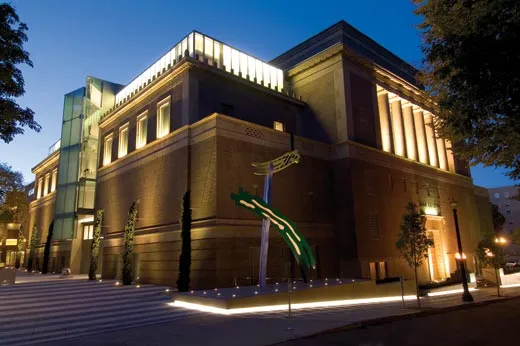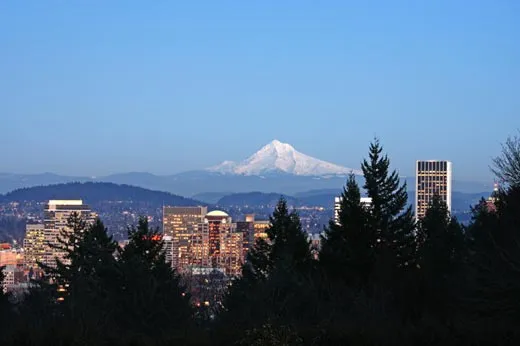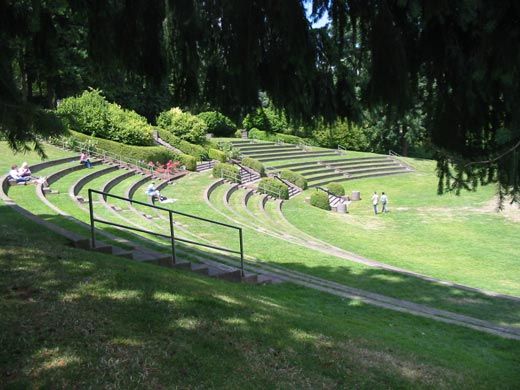Portland, Oregon
Population: 537,081 (2006 estimate)
Percentage of retirees: 10.5% in 2006
Cost of living index: Above average
Public libraries: 19
Public transportation: MAX light rail system, Portland Streetcar system, local buses.
Access to airports: Portland International Airport is served by the MAX light rail system.
Tax breaks: In Oregon, taxpayers 62 and over may claim a credit for pension income from public or qualified private pension benefit plans in the amount of the lesser of 9 percent of the individual's net pension income or the individual's Oregon personal income tax liability.
Number of museums: 21
Number of cinemas: 38
Cultural Highlights: Rich in museums, galleries, and performance venues.
Access to Healthcare: Good, with several teaching hospitals.
Climate: Rainy or overcast days common throughout the fall, winter, and spring, but temperatures are moderate; summers are pleasant.
Annual precipitation: 40.1 inches
Nearby Attractions: Pacific Coast, Willamette Valley wine country, Mount Hood, and the Columbia River Gorge all roughly within an hour's drive.
In the know: "I've lived here now about 15 months, and I'm still being surprised by the depth and breadth of the area's cultural amenities. One aspect stands out-world-class chamber music. I've also become a regular attendee of a great series of international piano recitalists. Jazz, pop music, and theater design are very hot in Portland."
-Dr. George L. Vogt, Executive Director, Oregon Historical Society
Portland's reputation as one of the country's progressive hubs is due in part to its aim of being a well-planned, "green" city. Environmentalism is a credo here, obvious in the sustainable restaurants, eco-friendly buildings, good public transportation and undeveloped green spaces surrounding the city-including the largest "urban wilderness" in the U.S., the 5,000-acre Forest Park. At the same time, the cultural offerings are strong, the handcrafted beers notable, and the atmosphere energetic and open.
Portland's location has a lot to recommend it. The downtown is cut by the Willamette River, while on the eastern skyline, the white pyramids of Mount Hood and Mount St. Helens are visible on clear days. The city's downtown and its old, close-in neighborhoods are easily navigable and mostly within walking distance of each other. But public transportation, including a light rail system, a streetcar, and a newly installed aerial tramway, also make it easy to get from one end of this small city to the other.
The art scene in Portland is vibrant and sophisticated. The city has its own ballet and opera company, several respected theater venues, and the Portland Art Museum. One of the West Coast's most significant venues for major national and international traveling exhibits, it's located in the heart of downtown, fronting the South Park greensward, along with a concert hall and the Oregon Historical Society.
Another strong arts area, the Pearl District, lies at the north edge of downtown. Its old warehouses now house restaurants and cafés, galleries and theaters, including the Gerding Theater, home to the respected Portland Center Stage. A beloved landmark in this area is Powell's City of Books, an independent and labyrinthine old bookstore that somehow embodies the spirit of Portland.
Of course, another great Portland hallmark, the city's rose garden, enjoys the distinction of having been the nation's first test garden.
Several universities, including Portland State, Oregon Health & Science University (a state leader in healthcare and medical research), and Reed College contribute to the city's vibrancy.
Planning Your Next Trip?
Explore great travel deals
Smithsonian magazine participates in affiliate link advertising programs. If you purchase an item through these links, we receive a commission.


